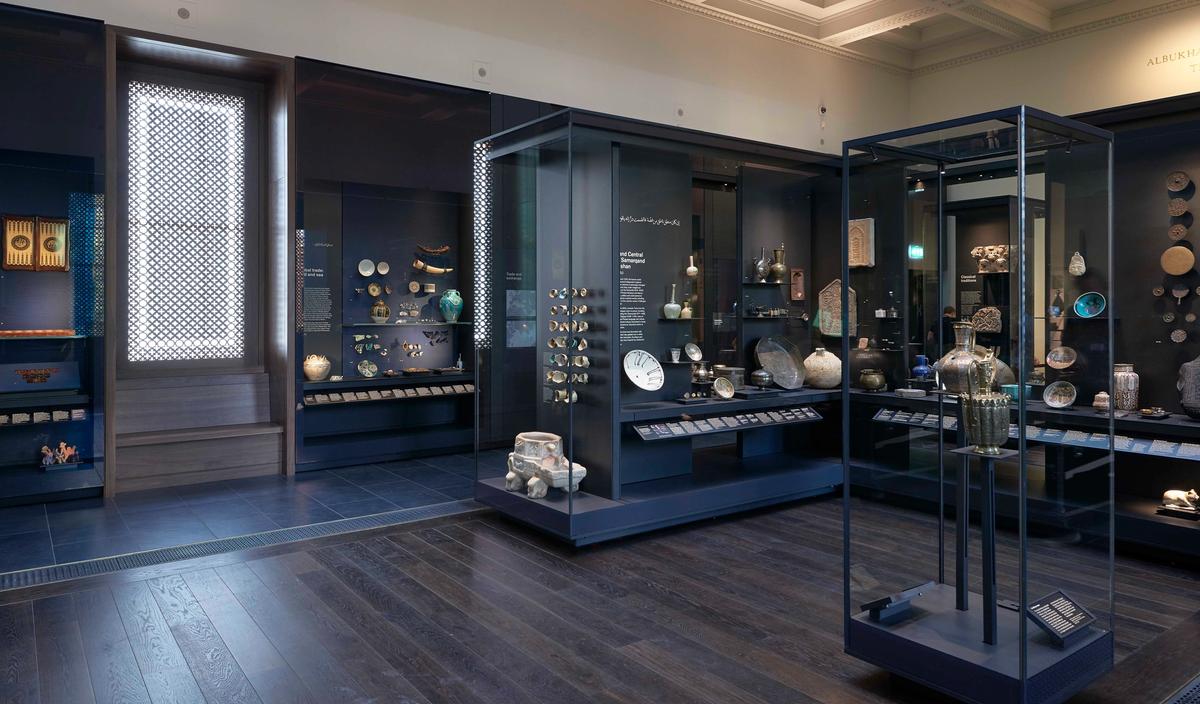Hartwig Fischer, the director of the British Museum (BM), has so far proved to be quieter and less publicly visible than his predecessor Neil MacGregor. But in the two years in which Fischer has been at the helm of the BM, he has begun to make a significant, even dramatic, impact on the displays. One of the biggest transformations so far has been in the museum’s galleries of Islamic art, which opened on 18 October: the Albukhary Foundation Gallery of the Islamic World.
On this week’s episode of The Art Newspaper podcast, Jane Jakeman, the novelist who regularly writes about Islamic art, says that the Islamic collections had previously been “squashed into crowded cabinets right at the back of the building and you only found them by happy chance unless you were really searching for them”. In the previous displays, she says, “everything was really a bit dull and dim and slightly dusty looking”. In the new hang, however, the exhibits have “two enormous galleries… and they have masses of space and light and very high ceilings”. Colours are allowed to sing, so “you really get the glitter and the shine and the pinks and reds, and absolutely heavenly arrays of blues, from turquoise through all the peacocky colours,” Jakeman says.
The initial relegation of Islamic art to a minor aspect of the museum’s displays were essentially “all Prince Albert’s fault, really, he of the heroic whiskers”, Jakeman adds. “In the 1851 Great Exhibition, Islamic art ended up being labelled as arts and crafts and therefore inferior to the beaux arts, the fine arts.” Many of the collections were divided between the National Portrait Gallery and the Victoria and Albert Museum, so the BM “had to make do with what was left, which was basically bits of archaeology and odd things that travellers had brought home, curiosities—I think you could call it very high-class bric-a-brac—and a few spoils of war that they couldn’t fit in anywhere else. So that’s why they had this odd collection jumbled up in the back rooms.” Jakeman hails Venetia Porter, the museum’s current senior curator, who “through a series of exhibitions has managed to highlight the Islamic collection. And they’ve also got funding that’s allowed them to buy things.”
“[In the new displays] you really get the glitter and the shine and the pinks and reds, and absolutely heavenly arrays of blues, from turquoise through all the peacocky colours.”Jane Jakeman
One of the key elements of the new galleries is their use of light, such a key aspect of Islamic art and architecture, where it is used almost as a medium as vital as solid materials. At the BM, the windows are covered with walnut mashrabiya—the Arabic form of covering windows with pierced hardwood. “It gives the most beautiful light drifting through the windows, but it’s also apparently technically good for the objects, so it’s a wonderful compromise. And it fills these galleries with a soft light, which is perfect,” Jakeman says. Through these window coverings, “you became aware that light is a living thing, it’s not just a means of seeing, it’s something that’s always in the room with you. And I think these galleries reflect that, because there are all these substances that reflect light: there’s lustre, there’s metalwork, there’s glass, there’s crystal, there’s mother-of-pearl, all these beautiful reflective surfaces.”
You can hear more of Jakeman’s views on the Albukhary Foundation Gallery of the Islamic World on The Art Newspaper Podcast, which you can also find on iTunes, Soundcloud and TuneIn. Also on this week’s episode, we hear about the Bruce Nauman opus at the Museum of Modern Art and MoMA, PS1, New York.
• The Albukhary Foundation Gallery of the Islamic World, British Museum, London, is open now.


